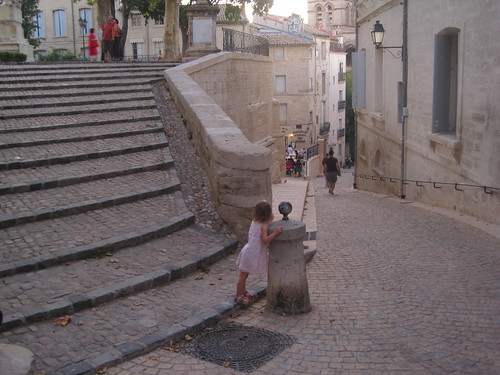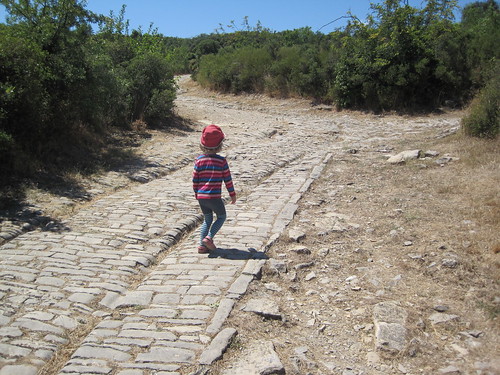Do GIS paradigms and processes scale infinitely inward and outward? I like geeking out on geography as much as the next, but this raised my eyebrows (emphasis mine):
spatial@ucsb seeks to position spatial concepts as the driving force for spatial thinking and for the selection and use of spatial tools. We are initiating the collection with eight concepts that are the focus of spatial reasoning in the use of geographical information. These concepts are demonstrable at all levels of space and time (from sub-atomic to galactic, past through future, and microseconds to ions). They can be rendered understandable through simple illustrations to young children but they are also sufficiently engaging at advanced levels for thinking about scientific and social problems.
All levels of space and time? The so-called "first law of geography" explains only classical phenomena. At small scales its applicability vanishes, and you need quantum physics to explain phenomena like atomic spectra, scattering, and tunneling. Even at the relatively large scale of cells and ice crystals, chemical and physical processes dominate, which makes me skeptical about the application of GIS to the nanoscale (emphasis mine):
When spimelike devices are built at very small geographies, capable of sensing and even manipulating objects at exceptionally fine scales, they become useful for nanoengineering. In recent years, there has been a massive fueling of interest in nanoscale science and development of motors, actuators, and manipulators at nanoscales. With these developments have come a veritable land grab and gold rush for scientific inquiry at hitherto relatively underexplored scales: within the earth, within the body, within objects, within anything to be found between 1 and 100 nanometers. Geographers missed out on the last bonanza at fine scales and were mostly absent from teams tasked with mapping the genome. The cartography required to visually map the genome is trivial and the processes that govern genomic patterns are completely alien to most geographers' skill sets, so their exclusion from these endeavors is understandable. The science and engineering surrounding nanotechnology differ from this situation, however, in that they are primarily concerned with spatiotemporal patterns and processes and the scaling of systems to new dimensions. These areas of inquiry are part of the geographer's craft and fall firmly within the domain of geographic information technologies. Process models with spatial sensing and semantic intelligence could play a vital role in future nanoscale exploration and engineering
The usefulness of spatial thinking fades at larger scales, too: it tells you nothing, for example, about the redshift of distant objects, you must use general relativity. It fails to explain some important phenomena at even modestly large scales, such as the planetary-scale waves that shape the Earth's climate system.
Geography isn't (in my probably biased opinion) a predictive science like physics. It's more like non-experimental branches of sociology or psychology -- relying on and often contributing to advances in fundamental fields, but powerful only in explaining bulk or ensemble features of the world. I should put scare quotes around the word 'only' in the previous sentence, because that's no small thing. Physics alone can't explain the way of the world at scales of human life, so geography will always be an important field, but a return to temperance in its rhetoric might be in order.



Comments
Re: 5 years
Author: Ron Lake
I think some of you guys are in dream land. Clemens said nothing surprising (including that it came from Clemens) - no one in the OGC would claim that WxS services meet all requirements - NOR that there has been much progress on making meaningful SDI's. At the same time the problems being dealt with are more than map making and map viewing. What the right mix of architectures will be is not clear (in my view) to anyone. I think there are many notions of the Web and all have a place - whether it is the web of hyperlinked documents or the web of access to services (transactional interactions with security) or the web of real time collaboration (a la XMPP). The OGC problem space is very large (maybe this is a problem ..) and includes things from national security to commercial aviation to emergency response to conventional map making and viewing. I am not arguing AT ALL with the importance of user generated data, nor with neo-things - JUST don't think that such a point of view is not discussed within the OGC or ISO or many other places. Be proud of the neo accomplishments yes - but don't believe they are in such a different world. They are NOT!